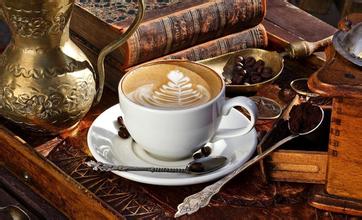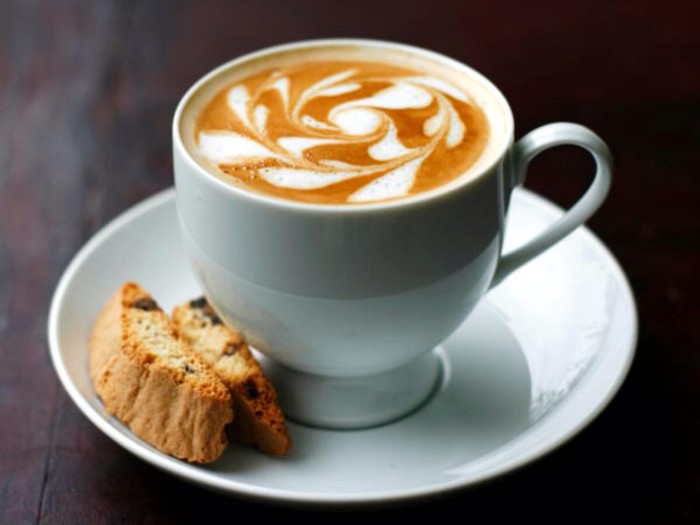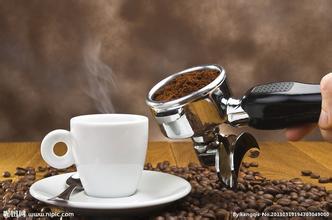Introduction of Indonesian Java coffee with unique flavor and taste
The most important island of Indonesia, the political, economic and cultural center of the country. It is about 970 kilometers from east to west and 160 kilometers from north to south, forming a narrow shape. It covers an area of 126000 square kilometers and has a population of about 124 million (2005 data). Mainly to mountains and hills, there are many volcanoes, there are 58 volcanic peaks above 1800 meters above sea level, of which 14 are above 3000 meters. Mount Semeru, the highest peak on the island, is located in the southeast of the island at 3676 meters above sea level. How wide the basins are in the mountains, many of which are the birthplaces of the ancient kingdoms of Indonesia and are still developed agricultural belts and town centers. The northern coast is an alluvial plain with many man-made ports; the south bank is steep and hilly. Earthquakes and tsunamis are frequent. The climate is hot, with high temperature and rainy weather all year round in the west and dry season in the east. The annual precipitation is about 1500 mm, less than 1000 mm in a few areas and more than 4000 mm in mountainous areas. There are many rivers, and the rivers entering the sea on the north bank are large, mainly Zhi Lion, Zhi Manu, Thoreau, Zitarong, Brantas and so on. The soil on the island is fertile, the natural conditions are good, and the forest cover rate is 23%. The land reclamation rate is 70%, which is the highest in the country. Mineral deposits include oil, coal, manganese, iron, gold, silver, phosphorus, sulfur, iodine and so on. Rice, corn, tea, peanuts, sucrose, kapok, cinchona cream and teak account for 60% to 90% of the national output, as well as rubber, coffee, oil palm, coconut and cocoa. Industries include oil refining, shipbuilding, machinery, metallurgy, rubber, textile, chemical industry, papermaking and so on. Transportation is well developed, with 60% to 70% of the mileage of roads and railways in the country. In the 2nd century, the Eastern Han Dynasty was filial to the emperor Yongjian for six years (131). Ye Tiaoguo sent an envoy to the Eastern Han Dynasty. "Ye Diao" is the pronunciation of the ancient Java Sanskrit name Yavadvipa.
In the 5th century, in the eighth year of Yixi in the Eastern Jin Dynasty (412), the eminent monk Faxian landed in Yabadi. Yevati is Yavadvipa, which is ancient Java.
It is called Holuodan from the Eastern Han Dynasty to the Sui Dynasty.
In the Tang Dynasty, it was called Huan Ling and Huan Po.
In the Song Dynasty, there were three countries on the island of Java: Taruna in the west, Madalan in the middle, and Jianyili in the east. In the third year of Song Taizong Chunhua (992), King Dharmvamca of East Java sent an envoy to pay tribute. At that time, the King of Muro Tea had unified Java, and his power had extended to Bari, Bolin State, and the war with Sanfoqi on the island of Sumatra. But as a result of the East Java-Sanfoqi War, the East Java national army was defeated and King Dharmvamca was killed. The power of Sanfo Qi expanded into Java.
The rise of Shinhashari on the island of Java in the 13th century.
In 1290 King Kertanagara of Shinhashari expelled the three Buddhas from Java. Kertarajasa, son-in-law of King Ketanagara, founded the powerful Manchu Boyi dynasty, with the city of Manchu Boyi as its capital (southwest of present-day Surabaya).
Then Ketanagara, the king of Shinhashari, was killed by the rebel Jayakatwang (Jayakatwang).
From 1292 to the 29th year of Yuan Dynasty, Kublai Khan sent a navy composed of 1000 warships to cross the sea from Quanzhou, Fujian Province, and landed in Java. Ketalayasa, the Manchu king, attacked the rebellious general Jayakatwang of the Shin Heshali State and destroyed the faith of the Heshali State. Ketalayassa, the king of Manchu Boyi, then rebelled against GE and repulsed the Yuan army, unifying Java. The History of the Yuan Dynasty calls Manchu Bo Yi "Malopacher" and is the capital of Java.
At that time, Java coffee sold to Europe was a very special kind of coffee. At that time, it was shipped to Europe and the United States by sailboat, and the distance was long and the speed was slow, so it took a lot of time to transport. In this case, the coffee seems to have undergone a special fermentation and has a very unique taste.
High quality Java coffee
High quality Java coffee
Later, when the ship replaced the sailboat, due to the shortened delivery time, people drank relatively fresh coffee beans. But people who are used to drinking Chen beans are not used to the fresh taste, so they desperately pursue old Java coffee, so that the Indonesian government and some businessmen deliberately store fresh beans in warehouses for one or two years and then sell them to consumers. In fact, compared with fresh beans, the acidity of aged Java beans is close to zero, but the flavor is more intense. Because of the long storage time, the increase in cost and the limited quantity, Java has always been a hot item in the coffee market. In the 1880s, some profiteers deliberately tampered with some fresh Guatemalan or Venezuelan beans to mimic the high prices of old Java. It is intolerable that profiteers dye coffee beans to make them look more like old Java, but there is no doubt that the dyed chemicals are certainly toxic.
Java produces only a small amount of Arabica beans, most of which were imported from Africa after the rust disaster. This coffee has a strong bitter taste after roasting, but the flavor is extremely light. Although the acidity is low and the taste is delicate, it is rarely used for direct drinking, is often used to mix mixed coffee, or is used to make instant coffee. Each caffeine variety has its own strong character, such as masculine Mantenin, with a character similar to that of an iron man; mellow, fragrant blue mountain coffee, gentle women miss addicted. Java Coffee, which has always been light and fragrant, is suitable for those who like light sex. Such people do not want to drink coffee as a sitting thing, from sour, sweet, bitter, astringent experience what profound philosophy of life, just want to simply drink a cup of delicious coffee, a cup of hot Java coffee, let these people realize that "the realm of life is rich and quiet." Quiet, because of getting rid of the temptation of external fame and gain; rich, because of having the treasure of the inner spiritual world. The happiness of life is to reap such an incisive interpretation of the realm.
Java coffee
Java coffee
The sour, bitter and sweet tastes of Java coffee match well. Unique fragrance, after drinking, the aroma fills the whole mouth. Exhale the aroma from the mouth again from the nose, the smell is very full. Maybe you will find it too overbearing, because it will quickly occupy your taste buds, your mind and even your soul. Why resist it? The life we live in is full of sour, sweet, bitter and astringent, so let the smell of coffee take away everything in the world. What we enjoy is not just a cup of coffee, but also the quiet moment that coffee brings to us.

Important Notice :
前街咖啡 FrontStreet Coffee has moved to new addredd:
FrontStreet Coffee Address: 315,Donghua East Road,GuangZhou
Tel:020 38364473
- Prev

Sidamo Shakizo Coffee Flavor Coffee Sidamo Coffee Coffee Sidamo Coffee Coffee
Coffee bean details: country: Ethiopia Grade: G1 production area: Sidamo Gujisha Chiso Micro production area Baking degree: shallow Baking (end of explosion) treatment: washing Variety: original seed producer: local small Farmer Flavor: lemon, Citrus, Piaget Tea, Caramel Shakiso (Shakisso/Shakiso) is located in the Guji producing area of Sidamo and is located in the Central Africa of Sidamo.
- Next

Characteristics of Kenyan coffee beans Kenyan coffee producing areas
It entered Kenya in the 19th century, when Ethiopian coffee drinks were imported into Kenya through southern Yemen. But it was not until the early 20th century that the bourbon was introduced by the St. Austen Mission (St.AustinMission). Kenyan coffee is mostly grown at an altitude of 1500m, 2100m, and is harvested twice a year. To ensure that only ripe berries are picked, people must be in the forest
Related
- Detailed explanation of Jadeite planting Land in Panamanian Jadeite Manor introduction to the grading system of Jadeite competitive bidding, Red bid, Green bid and Rose Summer
- Story of Coffee planting in Brenka region of Costa Rica Stonehenge Manor anaerobic heavy honey treatment of flavor mouth
- What's on the barrel of Blue Mountain Coffee beans?
- Can American coffee also pull flowers? How to use hot American style to pull out a good-looking pattern?
- Can you make a cold extract with coffee beans? What is the right proportion for cold-extracted coffee formula?
- Indonesian PWN Gold Mandrine Coffee Origin Features Flavor How to Chong? Mandolin coffee is American.
- A brief introduction to the flavor characteristics of Brazilian yellow bourbon coffee beans
- What is the effect of different water quality on the flavor of cold-extracted coffee? What kind of water is best for brewing coffee?
- Why do you think of Rose Summer whenever you mention Panamanian coffee?
- Introduction to the characteristics of authentic blue mountain coffee bean producing areas? What is the CIB Coffee Authority in Jamaica?

